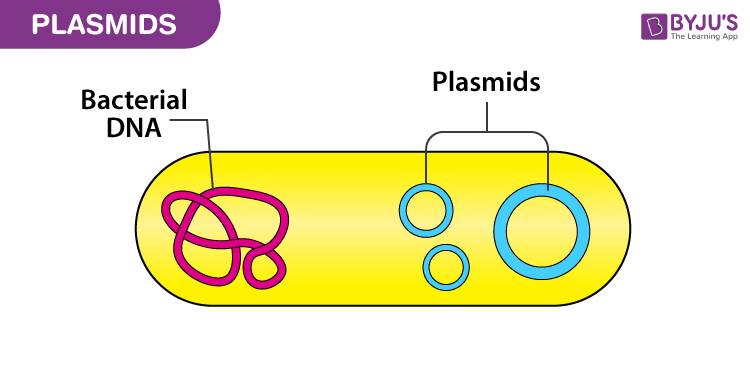Vector
A vector is a gene vehicle to transfer foreign DNA fragments into the host cell. Furthermore, they replicate and transfer information inside the host cell. A vector containing foreign DNA is termed recombinant DNA.
Examples of vectors – Plasmids, Bacteriophages, Cosmids, etc. Sometimes. Artificial chromosomes also act as vectors.
Plasmid
The plasmid is a type of vector commonly used in recombinant DNA technology. It is a double-stranded, circular, extrachromosomal DNA that is separated from the genomic DNA present inside the bacterial cells.. Also, it has a remarkable property of self-replication inside the host cell. Some can also be artificially created to serve this purpose. Examples – pBR322, pUC19, pUC18

Difference between Plasmid and Vector
| Plasmid | Vector |
| The plasmid is an extrachromosomal DNA structure that carries foreign DNA molecules. | In general, it is a DNA fragment that carries foreign DNA molecules into the host cell. |
| Examples – pBR322, pUC18, pUC19, etc. | Examples – Plasmid, Cosmid, Bacteriophage, BAC, YAC etc. |
Also Read: Plasmid
Frequently Asked Questions
What is a cosmid?
A cosmid is a hybrid between a lambda phage and a plasmid. They are specially designed cloning vectors that can carry large fragments of DNA molecules. They have an origin of replication (ori), a cloning site and also an antibiotic-resistant gene. Example – c2RB.
How are plasmids used as vectors?
First, separate the plasmid from the bacterial cell using enzymes. Then, cut the plasmid DNA using restriction endonuclease and then amplify them. Now, insert the foreign DNA fragment using the ligases. This plasmid DNA (rDNA) reaches the host cell and replicates inside it. It also delivers information inside the host cell.
What are BAC and YAC?
They are artificially engineered DNA molecules that can carry large genomic fragments. Also, they have a high degree of stability. BAC (Bacterial Artificial Chromosome) vector occurs in bacterial cells, whereas YAC (Yeast Artificial Chromosome) is a vector that occurs in the yeast cell.
What is an expression vector?
The expression vector is widely used for protein production. It is a plasmid or virus that is specially designed for expressing genes in a cell. They have basic features of a vector like ori (origin of replication), insertion site, a selectable marker, etc. It should also carry a proper sequence for protein synthesis.
Also see: Cloning vector.

Keep exploring BYJU’S Biology for more exciting topics.
Comments